Why is it that when I create some design time data for my MVVM View, I have to nest the xmlns twice to access the properties of the property?
Example:
<d:DesignProperties.DataContext>
<local:UserListViewModel>
<local:UserListViewModel.Users xmlns:local="clr-namespace:ChatModule.ViewModels">
<local:User Name="Person 1" />
<local:User Name="Person 2" />
<local:User Name="Person 3" />
<local:User Name="Person 4" />
<local:User Name="Person 5" />
<local:User Name="Person 6" />
</local:UserListViewModel.Users>
</local:UserListViewModel>
</d:DesignProperties.DataContext>
I already have a local property defined in an xmlns of the UserControl. But to access the User struct in my underlying class, I have to define it again within the Users property.
Why is that?
All this works fine... I can see my runtime data which is awesome. I've never done this before, so it's neat to be able to see it. I notice that I frequently get errors that go away when I compile... but come back again any time I change the xaml.
The property 'Name' was not found in type 'User'.
The property 'Name' was not found in type 'User'.
The property 'Name' was not found in type 'User'.
The property 'Name' was not found in type 'User'.
The property 'Name' was not found in type 'User'.
The property 'Name' was not found in type 'User'.
Obviously it works, or else I wouldn't be able to see the runtime data.
I also want to extract this design time data into another xaml class, and reference it within this class so I don't have the actual design time data located within the view itself... merely a reference to another xaml file.
And so I have done so... like this...
<UserListViewModel xmlns="clr-namespace:ChatModule.ViewModels">
<UserListViewModel.Users xmlns:local="clr-namespace:ChatModule.ViewModels">
<local:User Name="Person 1" />
<local:User Name="Person 2" />
<local:User Name="Person 3" />
<local:User Name="Person 4" />
<local:User Name="Person 5" />
<local:User Name="Person 6" />
</UserListViewModel.Users>
</UserListViewModel>
However, when I get rid of the codebehind I get the same errors mentioned above(which go away on a build), but also an error that says
Cannot set properties on propety elements. Line 2 Position 6.
This doesn't allow me to build unlike the other errors. Why is this? How do I fix it? I'm still getting used to this design time data stuff.


